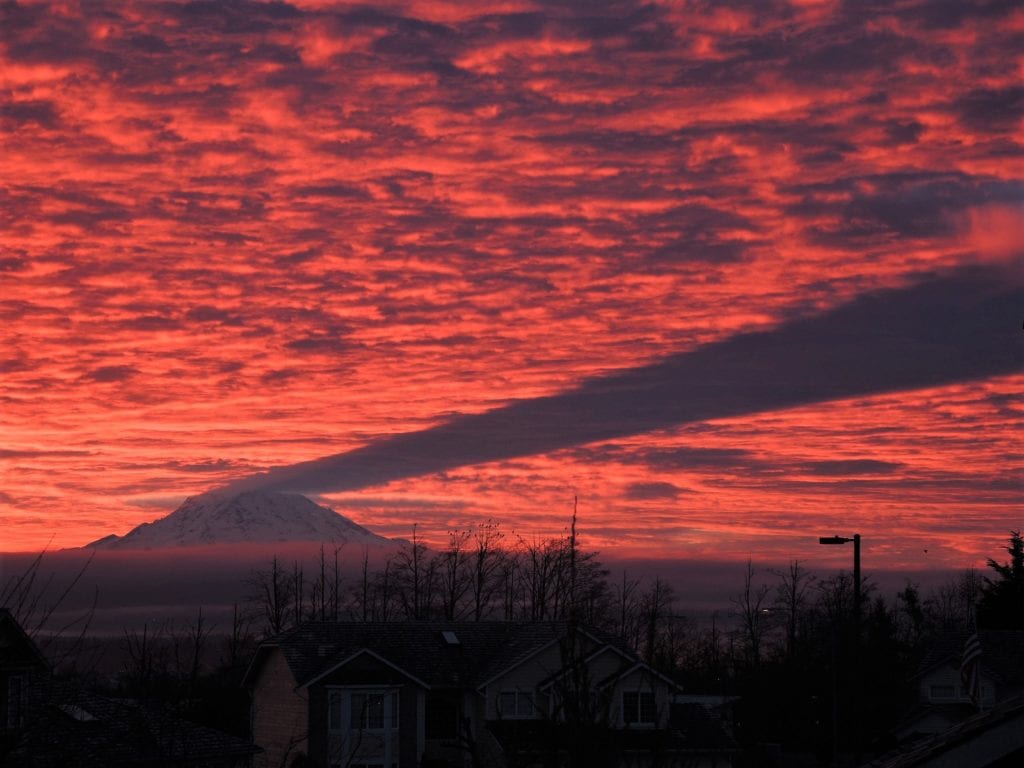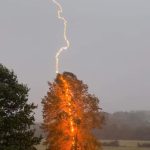Key Takeaways:
- Mount Rainier, an active volcano standing at over 4,300 meters, is considered highly dangerous due to its immense glacial ice and proximity to populated areas.
- Despite its potential for devastation, the volcano hasn’t erupted in recent times, allowing for captivating natural phenomena to occur.
- During the winter solstice, the rising sun aligns perfectly to cast an upside-down shadow of Mount Rainier onto the sky, creating a breathtaking sunrise spectacle.
- This unique phenomenon relies on precise environmental conditions, making it a rare occurrence for observers.
- Lenticular clouds, often resembling UFOs, also grace Mount Rainier’s summit, adding to the mountain’s allure.
At a towering elevation exceeding 4,300 meters (14,000 feet), Mount Rainier asserts itself as one of the world’s most perilous active volcanoes. Despite its last eruption transpiring between 1820 and 1854, contemporary predictions hypothesize that if the volcano were to erupt today, the resultant devastation could potentially surpass even the cataclysmic event of Mount St. Helens in 1980. This grim prospect emanates from Mount Rainier’s substantial reservoirs of glacial ice enclosed within its cone, coupled with the dense human habitation encircling its base.
Nevertheless, the current epoch has yet to witness Mount Rainier’s wrath, endowing those within its vicinity with a strikingly rare natural spectacle. A particular juncture on the calendar, precisely the winter solstice marking the transition between fall and winter, bestows an almost magical phenomenon. During this occurrence, the sun’s ascent takes a celestial choreography, casting its earliest rays in alignment with the mountain’s form. The outcome is a surreal sunrise landscape: Mount Rainier, manifesting as an inverted shadow, projected upon the canvas of the overcast heavens. The manifestation hinges upon a delicate interplay of environmental circumstances, its likelihood cautiously hoped to eclipse that of the volcano’s ferocious awakening.
Beyond this captivating interplay of light and topography, Mount Rainier surprises observers with yet another aerial spectacle. Its summit occasionally plays host to lenticular clouds, saucer-shaped formations that elegantly hover, resembling unidentified flying objects of the atmospheric realm. These supplementary displays add an extra layer of mystique to the mountain’s allure, solidifying its status as a natural wonder that casts not only shadows but also spells of enchantment upon the sky.
#1

#2
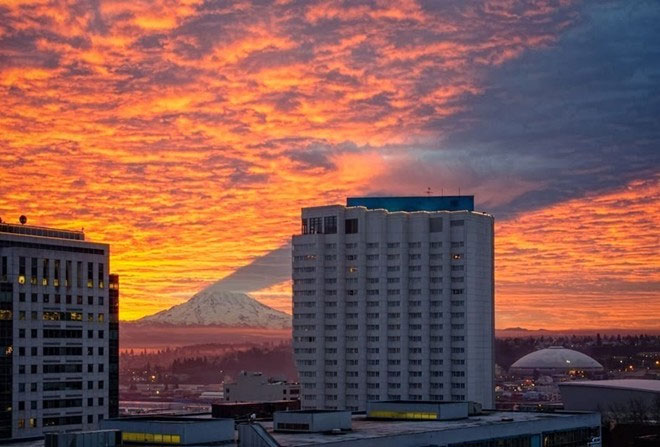
#3
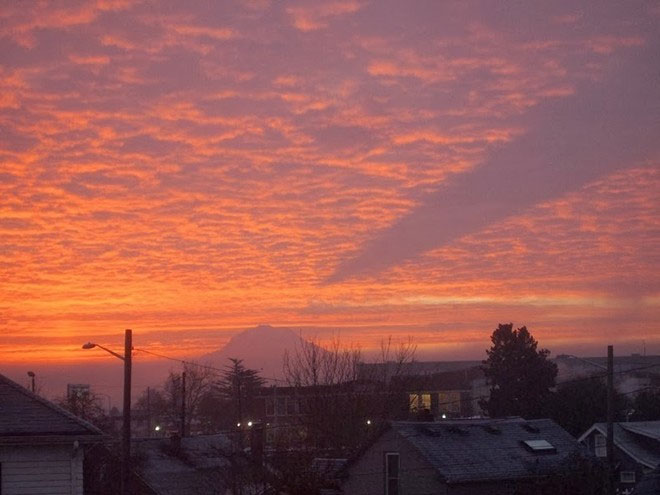
#4
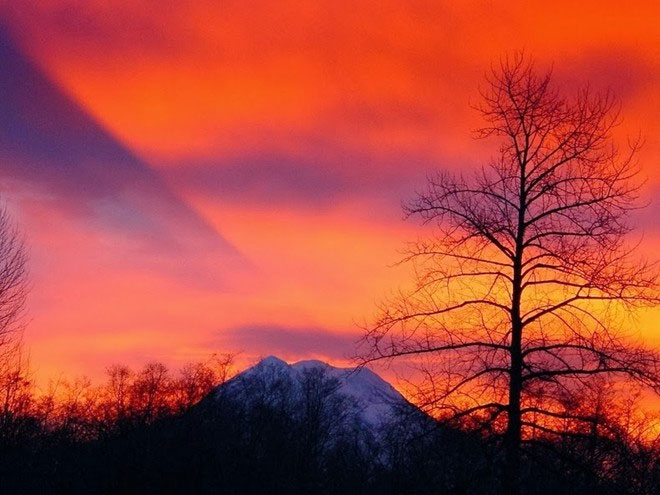
#5

#6
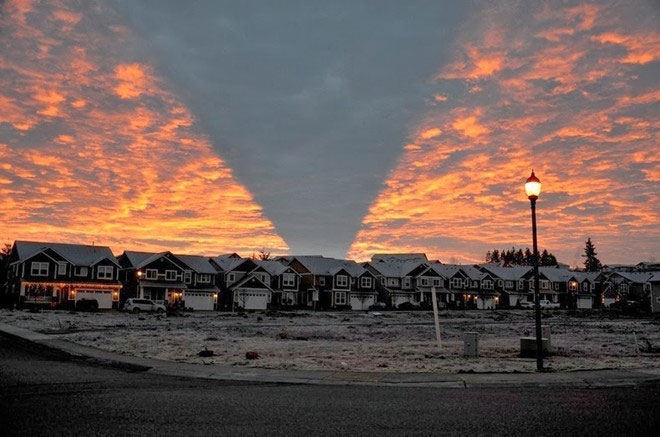
#7

#8
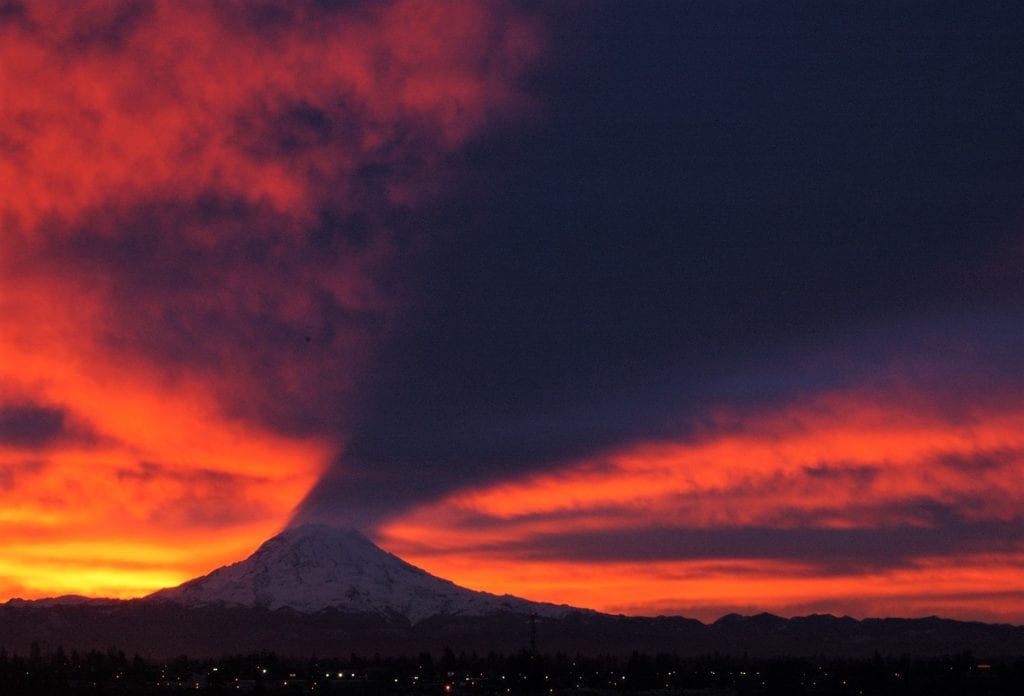
#9
